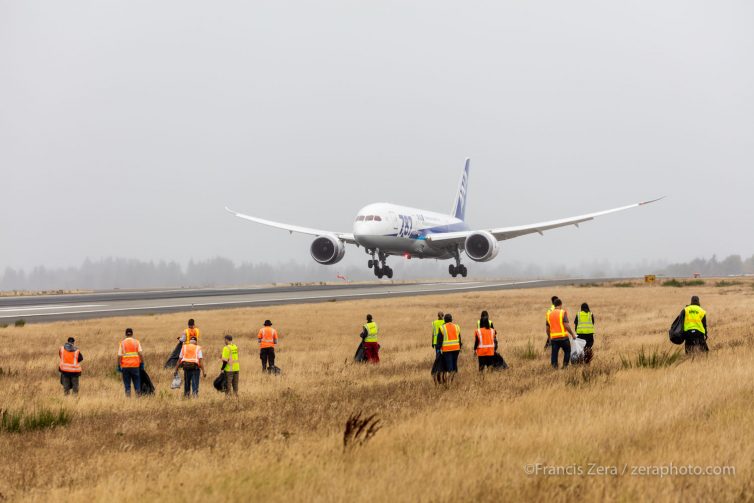
An ANA 787-8 made a graceful landing as it arrived from Tokyo’s Narita International Airport (NRT) during the 2016 FOD walk
FOD (foreign object debris) is the scourge of airport operations. FOD includes the mundane as well as the unusual: baggage-claim tickets, random bits of plastic, airplane parts, dead animals, rocks, and clumps of loose dead vegetation. Keeping runways and taxiways clear of FOD is a seemingly never-ending battle; airports’ operations areas are festooned with signs both warning of the dangers of FOD and reminding airport personnel to constantly be watching for, and picking up, such trash.
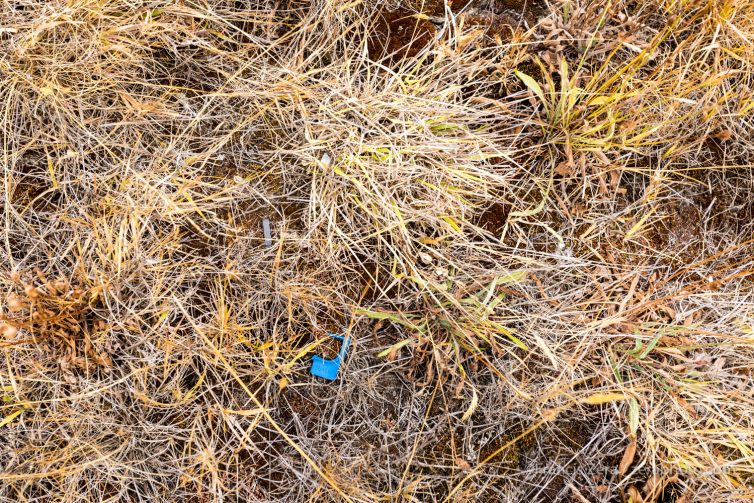
Items as seemingly innocuous as a scrap of plastic hold the potential to damage an aircraft
According to a 2013 FAA fact sheet, ’œFOD can be ingested in an aircraft engine, which can result in damage to the aircraft or cause an accident. It can damage or become lodged in aircraft operating mechanisms or cut aircraft tires. Boeing estimates that FOD causes an estimated $4 billion in damage to engines and aircraft taken out of service each year.’
Wikipedia’s entry on FOD claims the total is significantly higher, citing a now-offline 2008 report claiming $13 billion in direct and indirect costs to the aviation industry as a whole. In either instance, FOD damage is very expensive, and it makes sense that every airport have a FOD management plan.
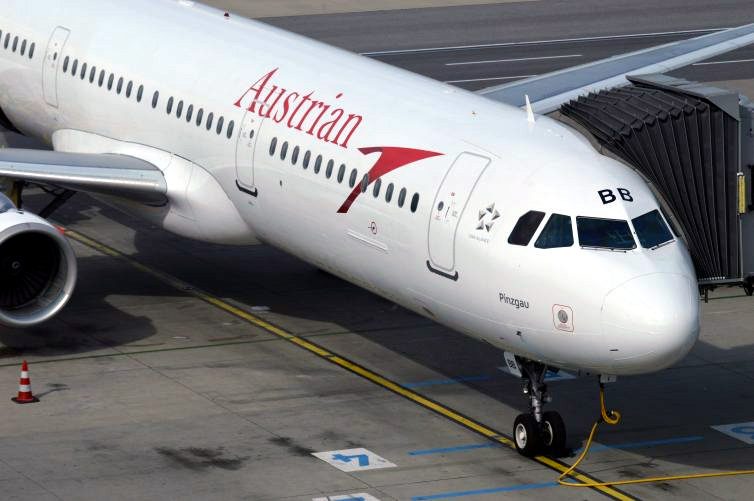
Austrian Airlines A321-100 “Pinzgau” – Photo: Alastair Long | AirlineReporter
Following a five-day trip to Austria, my son and I flew back from Vienna International Airport (VIE) to London Heathrow (LHR) in economy on Austrian Airlines — flight OS455. We had sampled a serious amount of wiener schnitzel over the last few days and that was important; we had to bench test Austrian’s own wiener schnitzel on the way home.
The airline’s slogan is “We fly for your smile,” and we were hoping to find lots of smiles.
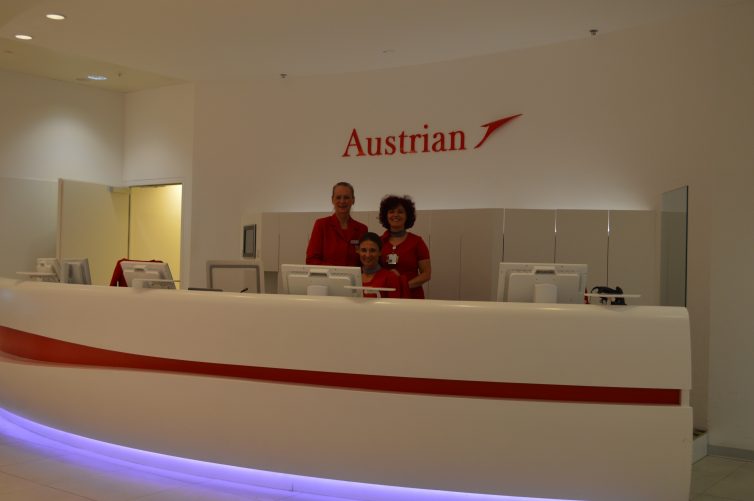
We Fly For Your Smile – Austrian Business Lounge reception at Gate F – Photo: Bo Long | AirlineReporter
We arrived at VIE and made directly for Austrian’s short-haul business lounge at Gate F in Terminal 3 — courtesy of the airline. The friendly receptionist found us on her list and gave my son an Austrian branded set of aircraft Mega Trumpf (top trumps) cards – we didn’t even need to fly for his first smile.
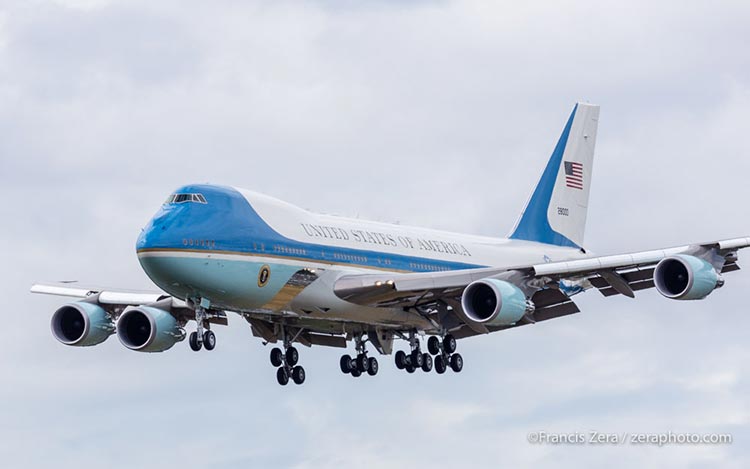
Air Force One landing at Seattle-Tacoma International Airport
Being a photojournalist can mean a lot of stressful work, but it definitely has its perks and one of the best experiences for an AvGeek photojournalist is being approved for White House press credentials and covering a presidential visit. I’ve been lucky enough to do that three times, and it never, ever, gets old.
This story is not about politics; it’s about the plane, the process of transporting a head of state, and what it’s like to cover the amazing ritual that is an Air Force One arrival/departure sequence.
Presidential travels are never a simple affair; watching the ballet of security and military ritual, one can’t help but to be impressed by the sheer magnitude of managing the task.
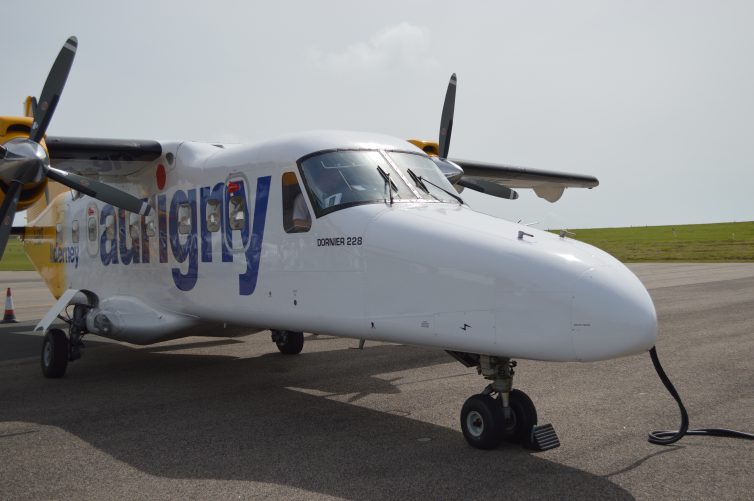
Aurigny’s Dornier DO228-200 – Photo: Alastair Long | AirlineReporter
This is a gem for the AvGeek: Four flights, three aircraft types, and one airline all in a single day. Could I generate some sort of silly AvGeek personal record? I would see. The opportunity arose by a chance encounter with Andy Butler, Distribution Services Manager for Aurigny Air Services at an industry event. Established in 1968 and nationalized in 2003, Aurigny (pronounced “Or-rini”) is the national carrier of Guernsey, an island in the English Channel (or La Manche, if you’re French). Together with the islands of Alderney, Sark, and some smaller islands, they form part of the Bailiwick of Guernsey. Along with Jersey, they are more commonly known as the Channel Islands.
The Channel Islands are British Crown dependencies, but are not part of the UK or the EU. Given the Channel Islands’ proximity to France, and having historically been part of the Duchy of Normandy, there is a distinctly Anglo-French heritage. Aurigny means Alderney in Norman French. Anyhow, geography and history lessons over. Back to flying.
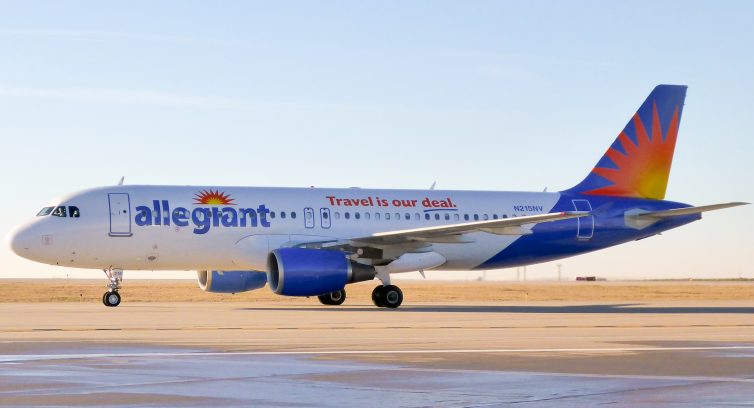
An Allegiant A320 in the current livery, seen at Kansas City International – Photo: C.T. Thongklin
Late last month Allegiant announced plans to acquire twelve new Airbus A320s. Airlines make fleet announcements often, but this one was of particular significance for a number of reasons.
Allegiant’s order for new A320s:
First, this order for brand-new planes, direct from Airbus, signals a change in standard operating procedure for the Las Vegas-based ultra-low-cost carrier (ULCC). Historically, Allegiant had shirked the trend of its ULCC peers, both domestically and abroad, of adopting fuel-efficient, modern aircraft. Instead, the airline has had a well-known preference for less costly mid-to-late life secondhand McDonnell Douglas MD-80 series planes. Cheaper planes equate to lower fares, and higher margins. This concept is not new; many budget carriers have used that model and benefited greatly from it (some have not). Allegiant is no exception. The airline is so well known for this preference, in fact, that few realize that the airline began acquiring Airbus aircraft in 2013. I myself was surprised to learn that the number of available seat miles flown by Allegiant’s Airbus fleet is nearly tied with that of their larger McDonnell Douglas fleet. Jude Bricker, Allegiant Travel Company senior vice president of planning, confirms expectations that the Airbus fleet will tip the scales by the close of 2016.
Older, used Airbus planes are known for being attractively priced. This is something Allegiant saw as early as 2012 when the airline announced plans to acquire its first batch of A319s. Then-President Andrew C. Levy stated, “A319 asset values have significantly declined and now mirror the environment we saw when we first began buying MD-80s.” While Airbus has focused much of its attention on pushing its newer and higher priced NEO (new engine option) models, it seems existing Airbus variants and future current engine option (CEO) deliveries are well positioned to become as ubiquitous as the much loved, budget friendly, long-lived MD-80s they are slowly but steadily replacing.
Allegiant’s newest (employee-approved) livery iteration:
Alongside this announcement, the airline unveiled plans for an incremental livery modification. Two final contenders were chosen, and employees were given an option to vote on which would be adopted.
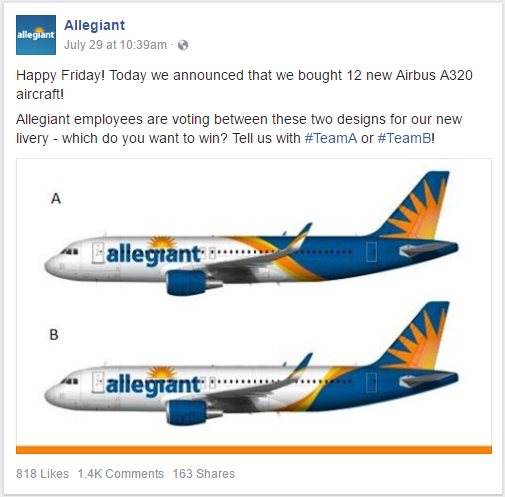
Allegiant announces A320 purchase and new livery candidates – Image: Allegiant’s Facebook
Which did the employees choose?







